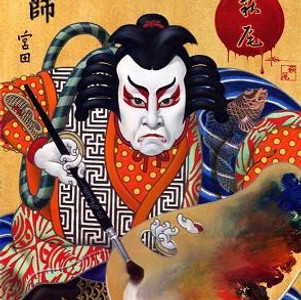Overview
Kabuki is a Westernized form of Japanese theater in which combinations of music, dance, and mime are displayed in a highly stylized manner. The use of vibrant costumes and displays, and the use of makeup is vital to the performance of kabuki. It was most popular during the Tokugawan Shogunate and is still performed to this day. Each region of Japan had it's own variations on acting and storytelling in kabuki. Performances were highly interactive with the audience, and it had highly sophisticated stages.

WhaT is Kabuki?
'Kabuki' comes from the verb 'kabuku' which means to “incline in a certain direction”. Another use for the word means "likely to draw attention". Kabuki is divided into 3 categories: ka (music), bu (dance), ki (skill)-which forms ka-bu-ki. Kabuki is a mix of music, dance, mime, all portrayed through gorgeous costumes and displays. The literature is less important than the huge range of vocal and visual skills displayed by the actors.

Kabuki Project
By: Will Falb, Arnav Gupta, and Andrew Caldicott







